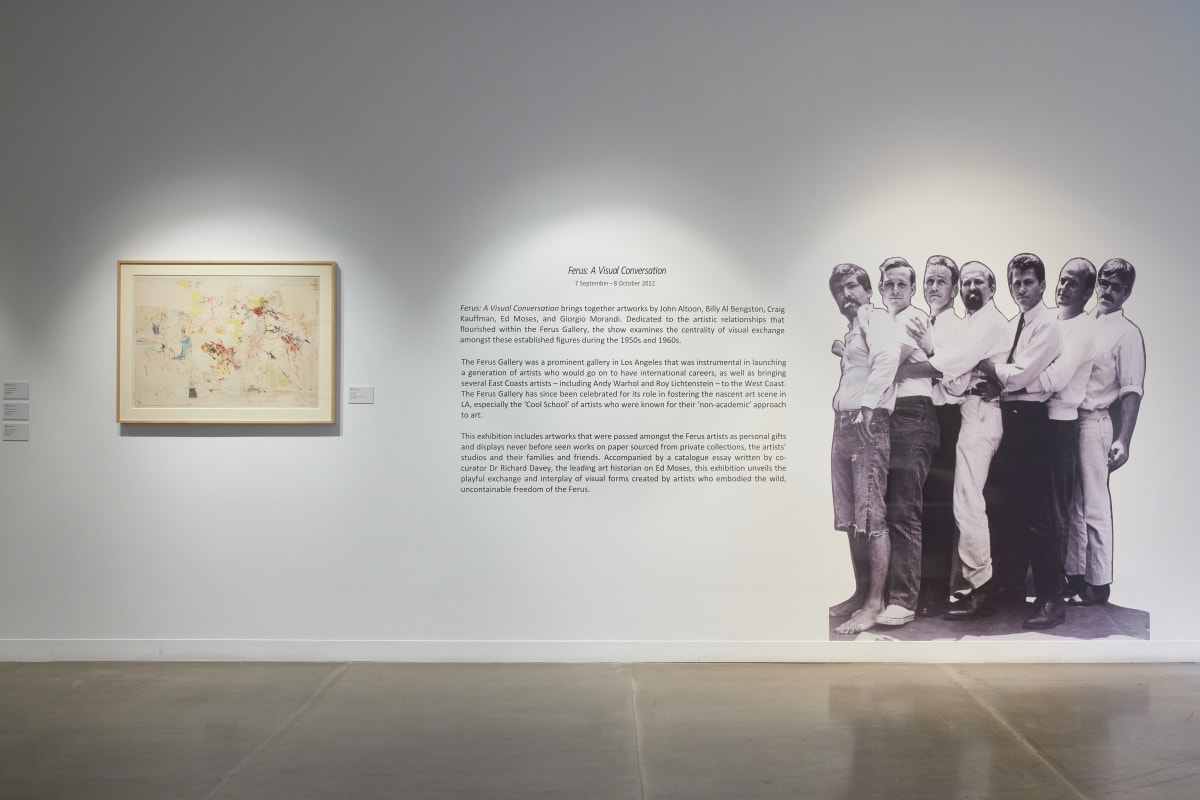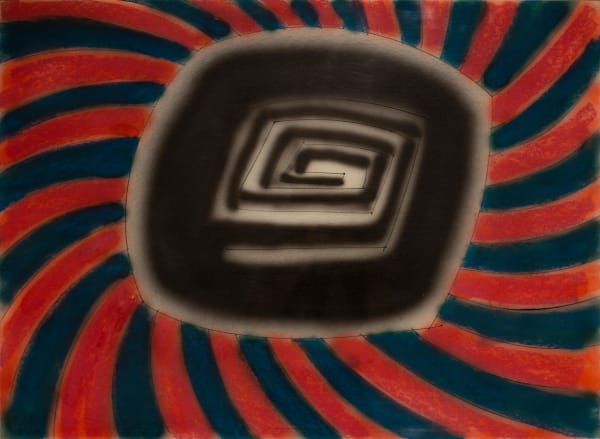Billy Al Bengston (1934 - 2022) is an American contemporary artist and sculptor based between Venice, California and Honolulu, Hawaii. Born in 1934 in Dodge City, Kansas, Bengston was one of the key figures in the Ferus Gallery circle in Los Angeles. His artistic practice is most associated with West Coast Pop and is best known for spray painting dented sheets of square aluminium with lacquer.
Often featuring car and motorcycle motifs, such as the chevron symbol placed at the centre of his works, Bengston’s highly finished pieces are recognized for his use of psychedelic colours and mandala-like forms. Amongst other recurring motifs in his practice are the artist’s signature sergeant’s stripes, which he adopted after seeing the work of Jasper Jones at the 1958 Venice Biennale- and abstracted images of hearts.
In 1955 he went to California College of Arts in Oakland, followed by studies at Otis Art Institute in LA. Since 1957, Bengston began showing with the legendary Ferus Gallery in Los Angeles, where we became part of “Cool School” – together with artists such as Ed Moses, Ed Ruscha, Robert Irwin, Larry Bell, Edward Kienholz, John Altoon and Ken Price. During that time, in the early 1960s, Bengston developed his artistic image that encouraged the viewers to associate his art with the motorcycle subculture. For instance, he spread a bike on the cover of the catalogue for a 1961 show at Ferus Gallery. Later, in the 1970s, silhouettes of iris flowers occur in Bengston’s paintings, which he often surrounds with overlapping circles.
Bengston’s work is included in a number of permanent collections, such as the Centre Georges Pompidou, Paris, the Corcoran Gallery of Art, Washington, D.C., the Honolulu Museum of Art, the Art Institute of Chicago, the Los Angeles County Museum of Art, the Museum of Contemporary Art, Los Angeles, the Philadelphia Museum of Art, the Museum of Modern Art, New York, the Solomon R. Guggenheim Museum, New York, the Whitney Museum of American Art, New York, and the San Francisco Museum of Modern Art.






